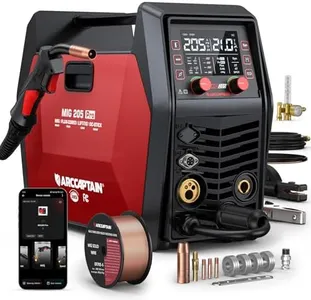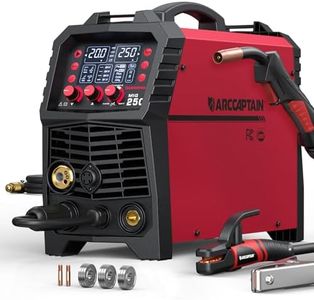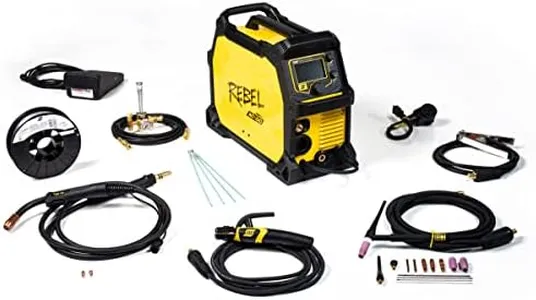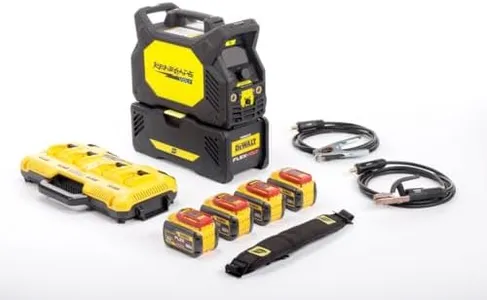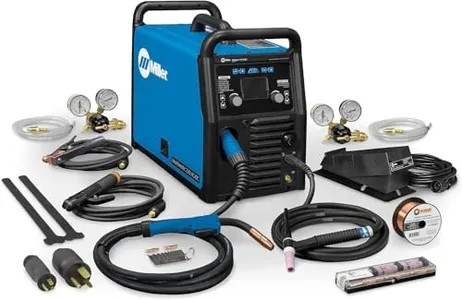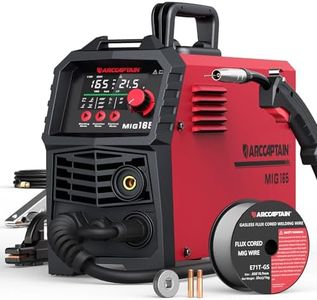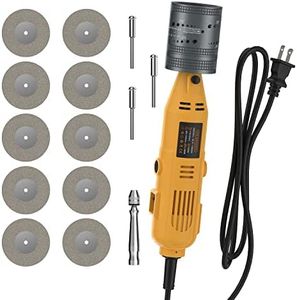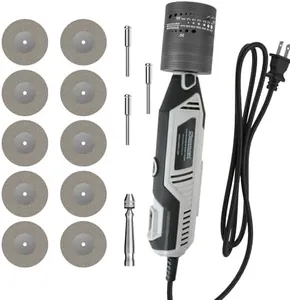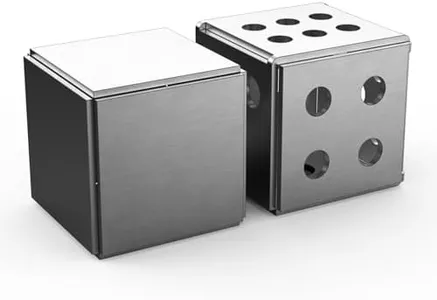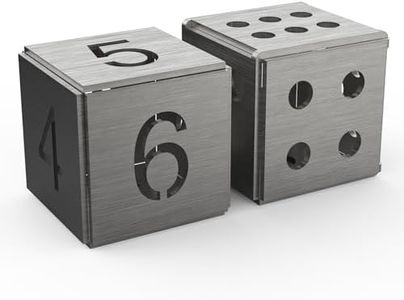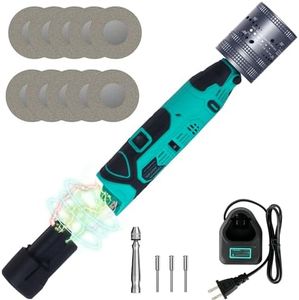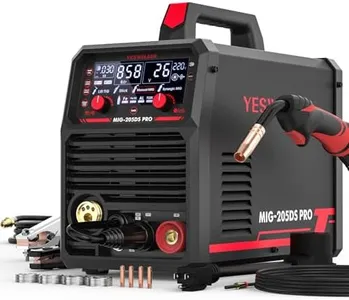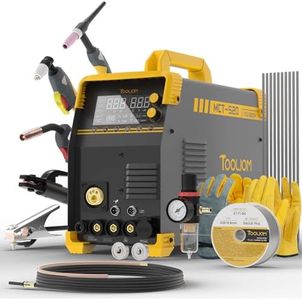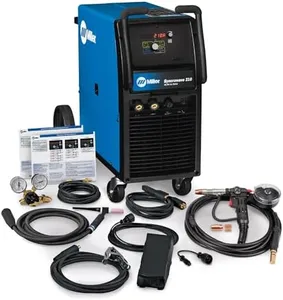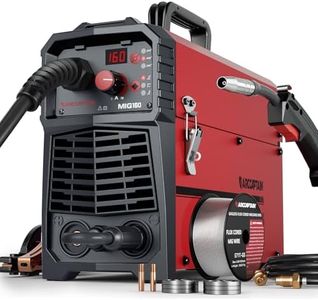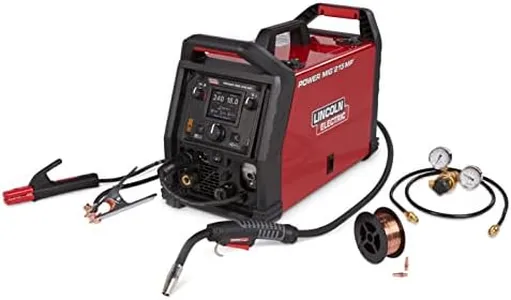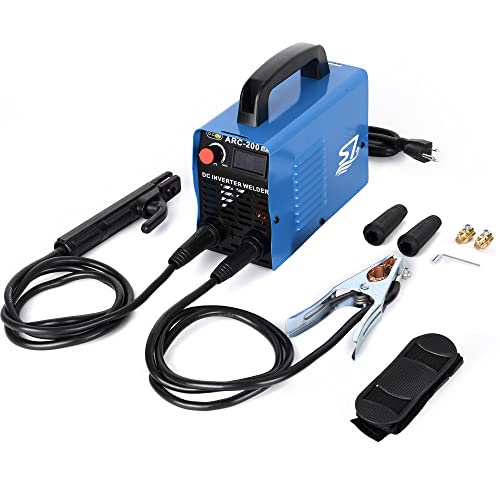Top 10 Stick Welders Deals Right Now
ARCCAPTAIN
24%OFF
Editor’s Choice
ARCCAPTAIN 250A MIG Welder, 110V 220V Gas MIG/Gasless MIG/Stick/Lift TIG/Spool Gun/Spot 6 in 1 Welding Machine Aluminum Welding Machine Professional Welder Machine with Large LED Display
Great Choice
Our technology thoroughly searches through the online shopping world, reviewing hundreds of sites. We then process and analyze this information, updating in real-time to bring you the latest top-rated products. This way, you always get the best and most current options available.

Our Top Picks
ARCCAPTAIN 250A MIG Welder, 110V 220V Gas MIG/Gasless MIG/Stick/Lift TIG/Spool Gun/Spot 6 in 1 Welding Machine Aluminum Welding Machine Professional Welder Machine with Large LED Display
Most important from
896 reviews
The ARCCAPTAIN 250A MIG Welder is a versatile 6-in-1 machine offering MIG, gasless MIG, lift TIG, stick welding (MMA), spot welding, and spool gun capabilities, making it an excellent choice for handling multiple metal types including mild steel, stainless steel, and aluminum. Its 250 amp max output provides sufficient power for medium to heavy-duty stick welding jobs. It operates on both 110V and 220V input, adding flexibility for use in various workshop or home settings.
Featuring a digital control system, the welder stabilizes the arc and includes helpful functions such as burn-back adjustment and adaptive crater control to enhance weld quality. The synergic MIG mode is beginner-friendly by automatically setting wire feed speed and current, while manual mode allows experienced users to customize settings. This design supports welders of varying skill levels effectively.
Safety features like VRD and overload protection help prevent damage or injury, offering reassurance particularly to less experienced users. The welder weighs about 33 pounds, making it portable enough to move around, though it may not be the lightest option for frequent transport. Its combination of power, safety features, and ease of use makes it a compelling choice for home shops and small workshop environments, while those seeking ultra-portability or specialized TIG welding might consider other options.
Most important from
896 reviews
Great Choice
ESAB Rebel EMP 205ic AC/DC Multi-Process MIG/STICK/TIG Welder
Most important from
53 reviews
The ESAB Rebel EMP 205ic AC/DC Multi-Process Welder stands out as a versatile option for stick welding, among other processes like MIG and TIG. Its true all-process capability allows it to effectively handle a range of applications, including using 6010 electrodes, which is beneficial for those involved in industrial welding tasks. One of its key strengths is the sMIG technology that adapts to the welder's technique, providing stability and improving welding quality. This feature can help both seasoned welders and beginners achieve better results with less training time.
Portability is another highlight, with a weight of only 49 lbs, making it easy to move around various job sites. The durable design with a 5-handle roll cage adds to its ruggedness, suitable for demanding environments. The TFT multilingual display offers numerous adjustable settings like pre/post flow control and weld tuning, which allows for fine-tuning to achieve optimal performance.
There are some drawbacks to consider. Potential concerns include the learning curve associated with some advanced features, which might be overwhelming for absolute beginners. Additionally, the machine could be on the heavier side for some users, particularly if you're frequently moving it around.
Most important from
53 reviews
ESAB® Renegade VOLT™ ES 200i Battery-Powered Stick and TIG Welder
Most important from
4 reviews
The ESAB Renegade VOLT ES 200i is a versatile stick and TIG welder that offers impressive performance both on AC mains and battery power. With a 200 A output on 230V mains and up to 140 A on battery power, it provides a good range of amperage suitable for various welding tasks. The inclusion of four DeWALT FLEXVOLT 12Ah batteries allows for portability, making it ideal for off-grid or remote welding operations.
It features a durable, impact-resistant housing and a user-friendly interface with memory storage for welding parameters, which is beneficial for repeat tasks. The AMP+ hybrid mode is a notable feature that offers extra power when needed, enhancing its flexibility and efficiency at maximum current (80%) with a high power factor (0.99). However, the product weighs 51 pounds, which, while portable, might be a bit heavy for some users to carry around frequently. Its compact dimensions (19 x 9 x 19 inches) do aid in portability despite the weight.
The welder is compatible with various electrodes, ensuring versatility in welding different materials. The product's arc stability is highly regarded, ensuring smooth and consistent welds. This welder is best suited for professionals and hobbyists who require a reliable, portable welding solution with the flexibility of battery power for remote operations.
